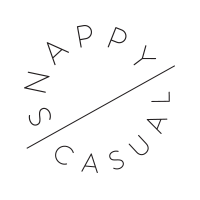Torticollis Tips and Update
UPDATE 8/13/12: We have found more success in treating Roo's torticollis with chiropractic care than we did with physical therapy. It is important to note that this information is still valid, and parents should be aware that spending a lot of time in products such as the Bumbo, swing, etc., are not always great for baby's neck and head as they develop.
I told you a couple weeks ago that Rooney has torticollis. Unfortunately, I wasn't fully impressed with our physical therapist (partly due to personality, partly due to the lack of information she gave me).
Thankfully, one of our blog readers (who wishes to remain anonymous) is a pediatric physical therapist and reached out to help. I researched a lot on my own about torticollis so I could be Rooney's advocate, but didn't find anything as helpful and practical as the tips below.
I share this with you because I hope that if your child has torticollis that you feel informed. I am amazed at how common torticollis seems to be nowadays. I had never heard of it before but have a couple friends whose babies (born within a month of Rooney) also have it. Roo's progress has been great so far and we are so glad we caught it early. We will still probably have to watch it for up to a year, but she should make a full recovery.
I will admit it is hard to remember to do these things sometimes, to stretch her when she does not want to be stretched, to add one more thing to our routine. Honestly, day care does most of it now that we only see her for an hour each evening. But we have made quite a few changes in our house to encourage her (moved her to her crib, carry her around in the tilt stretch, position ourselves on her left side during play, make her turn her head to the left if she wants to watch TV, etc.).
Thanks to the blog community and my new bloggy friend for the following tips:
There are so many baby "products" out there and new parents think the more the better and that if it's on the market it must be developmentally good for baby. But many of these can contribute to torticollis (and the associated risk of plagiocephaly or "flat head").
In addition to PT and stretching, a child with torticollis would benefit from a BARE MINIMUM of time in positioning devices ... car seat, swing, bouncy seats, etc., and in back-lying (like in the activity gym/mat...the exception obviously is sleeping) and MAX time on her tummy or in sidelying (roll a towel or blanket and put it behind her to prop her on her side).
She should also be sleeping flat (like in a crib) and having some repositioning periodically to avoid the tilt and pressure on the back right side of her head (NOTE: Rooney has left torticollis). When she is positioned in semi-reclined (like the napper, car seat, swing, bouncy chairs, etc.), gravity will pull her into her "position of ease" a.k.a head tilt and rotate with pressure on the same part of her skull. And without even realizing it, you may have moved her to four or five different devices but she's essentially been in the same position for the bulk of the day.
The best thing to supplement her PT is STRENGTHENING, which comes from tummy time. This doesn't just have to be on the floor either...she can be on your chest while you are on your back or on her tummy over your lap.
Another little tip is when she's playing to really encourage her to look UP and left. When she is in equipment (swing, bouncy seat, etc.), you can place toys strategically to encourage looking that direction as well as position the equipment so the people and activity in the room is that direction.
And in tummy time, until she can roll about and move stuff, you could use an activity gym/mat placed over her left shoulder (so she's not actually laying on the mat but on the floor) to encourage her to look that way. She may prefer tummy time propped slightly like chest over a boppy pillow or rolled towel. It makes the work of lifting that head a little easier and the reduces the risk of face-planting (no fun).



